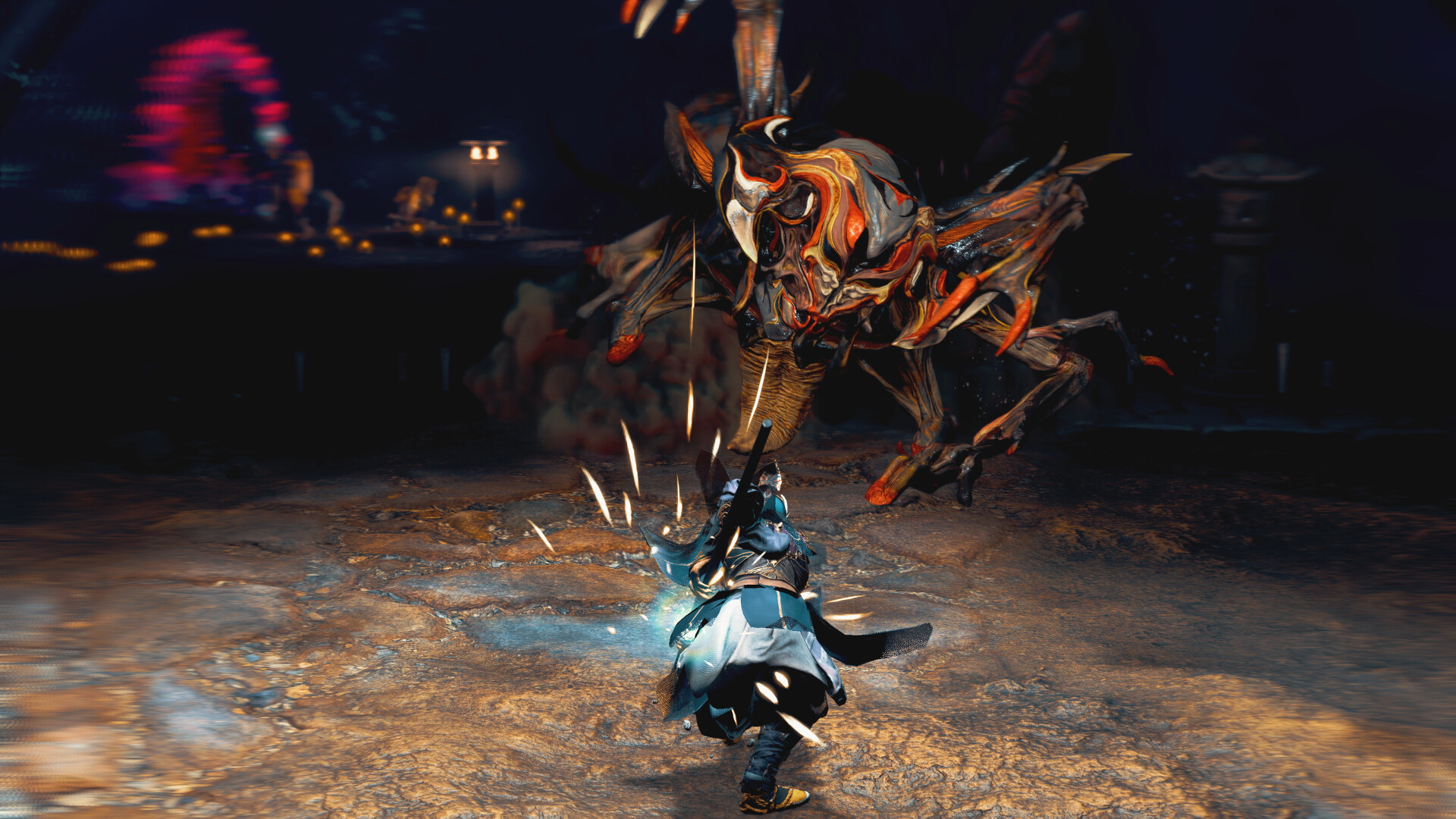By far the most exciting thing about Kunitsu-Gami: Path of the Goddess is that it is unapologetically weird. Developer Capcom describes its upcoming game as “Kagura action strategy”, with Kagura being a form of ceremonial dance in the Shinto religion. Real-life Kagura is said to possess purifying properties and, from what I can gather, often involves a slow procession by a priestess in a trance-like state. This is the central concept of Kunitsu-Gami, which sees you assume control of a spirit who protects a holy maiden as she sets out to purge corruption through Kagura dance.
Each level contains a Torii gate which has been overtaken by the Seethe, a malevolent force terrorizing local villages and infecting the wildlife. This gate must be reached and cleansed by the maiden in order to proceed. Your actions are divided into two distinct phases: day and night. During the day portion, you can run around freely and rescue villagers who have become trapped in the Seethe. As you do this, you collect magic orbs that can be spent assigning villagers roles.
Early on these roles are your standard combat positions, like ranged archers, magic-wielding shamans, and melee axemen. More exciting options become available as you progress, however. In my two and a bit hours of playtime of a behind-closed-doors demo of the game, I managed to unlock tanky sumo wrestlers and powerful ascetics with moves designed to slow enemies down to a crawl. Each role also has a robust upgrade tree, increasing total health and enhancing the power of their attacks.
Night and day
Once you have rescued all the villagers and chosen their roles, you can use a tactical view to position them around the map – almost like a traditional tower defense strategy game. You then spend any remaining currency getting the maiden to advance, which is a pretty slow and expensive process. While you’re juggling all of this, time is constantly moving forward, eventually causing the transition to night. At night, the maiden stops in her tracks and enemies begin to emerge from the Torii gate, making a beeline straight for her. If she takes too much damage, you lose, so you need to tactically position all of your powered-up villagers to keep her safe and sound.
This is where Kunitsu-Gami will feel the most familiar to anyone who has played the likes of Orcs Must Die or Bloons Tower Defense, but there are still a lot of things that set it apart. Firstly, you can rearrange your units on the fly. If a particular part of your line of defense is failing, you can quickly enter the tactical view and bring in some reinforcements or even reassign the roles of your troops. Villagers also have their own health bars, can take damage, and will quickly become overwhelmed if they are placed foolishly. You can run around and heal them up, but this quickly depletes your supply of rations – a hard-to-find resource that also serves as your own personal health boost.

There’s also the fact that you are just as much an active participant in the battle as your units. You can slash at enemies with a mix of light and heavy attacks while occasionally blocking, dodging, and deploying some impactful special moves. There’s loads of customization here too, with your choice of equipment and talismans dramatically altering your abilities and attacks. Sprinting over to the maiden to strike down some injured monsters that have somehow managed to make it through the front lines is a thrilling burst of adrenaline.
The stage alternates between day and night phases until the Torii gate has been reached and purged in a cutscene with a lavishly animated dance sequence, but there are loads of intriguing ways in which Capcom plays around with this formula. Most early levels were small woodland areas with a handful of clearly delineated paths but, just when I thought that I had got a clear grasp of things, I was suddenly tasked with defending the maiden on a fleet of moving ships. Enemies were coming from all sides on hilarious little dinghies and the cramped scale made for a highly invigorating challenge.
Surrounding the maiden with a ring of powerful units seemed like a winning strategy, but then I spotted giant cannons on some of our boats that could be used to destroy entire enemy crafts if fired at the right moment. This led to me sprinting between these cannons, setting them off while desperately hoping that the maiden would get out unscathed. It was complete chaos, but seriously fun. I was impressed with the variety and scale of the boss fights too, which occur after some of the levels, but really don’t want to spoil any of the biggest surprises.
That’s not all though, as Kunitsu-Gami also features some inexplicable city-building mechanics. After a level has been completed, you can come back to the environment on the overworld map and command its villagers to repair damaged buildings. This takes awhile, but yields loads of useful upgrade materials and makes for quite a relaxing diversion after some of the more intense segments. If you want even more to do, you can always replay past levels in order to complete bonus challenges, which should provide some extra incentive to keep revisiting your favorites.
There’s a lot more that I could rave about in Kunitsu-Gami, but I think it’s really the kind of game that is best experienced for yourself. Luckily, you can download a free demo right now, which offers a small selection of stages ahead of the full launch on July 19. It’s coming to PC, PlayStation 5, PlayStation 4, Xbox Series X, Xbox Series S, and Xbox One, and will be part of Xbox Game Pass.
You might also like…
Source link









